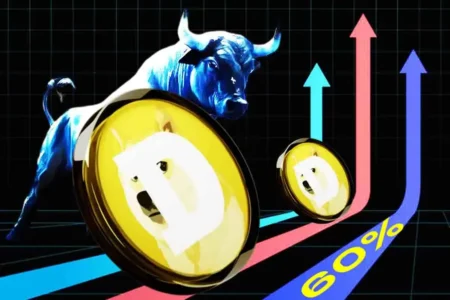Tether’s Strategic Bitcoin Accumulation Amidst Market Volatility
In the ever-changing landscape of cryptocurrency, Tether has reinforced its commitment to Bitcoin (BTC), recently adding 8,888 Bitcoins to its holdings, equating to a massive $735 million investment during the first quarter of 2025. This strategic acquisition brings Tether’s total Bitcoin reserves to an impressive 92,647 BTC, valued at approximately $7.64 billion, making it the sixth-largest Bitcoin wallet in the world. Interestingly, this uptick in Bitcoin holdings occurred during a tumultuous period for the cryptocurrency, as BTC experienced a notable price decline of over 12% in Q1—a downturn marking one of the worst-performing first quarters in the last seven years.
Tether’s Long-Term Vision for Bitcoin
The decision to allocate 15% of its quarterly profits towards Bitcoin purchases reflects Tether’s long-term vision for crypto investments. This strategy signifies the company’s robust belief in BTC’s future potential, despite current market pressures. Data from Spot On Chain indicates that Tether enjoys an unrealized profit estimated at $3.86 billion on its Bitcoin holdings. Market analysts are keeping a close watch on Tether’s activities, as institutional and corporate Bitcoin purchasing patterns can significantly influence price trends amid ongoing market volatility.
An Unprecedented Minting Surge of USDT
In addition to its massive Bitcoin accumulation, Tether has ramped up its minting of the USDT stablecoin. Within just 24 hours, Tether minted an additional $1 billion USDT on the TronDAO platform, raising its total holdings on Tron to over $8 billion. Over the past year, Tether has minted a staggering $40 billion in USDT stablecoins, reflecting an aggressive strategy in a competitive market that has seen other players, including Circle and Ripple, intensifying their efforts. The recent minting surge comes amid the "stablecoin wars," intensifying as competitors like Ripple launch new initiatives to capture market share.
The Competitive Landscape of Stablecoins
The market for stablecoins has become increasingly competitive, especially with Ripple’s recent launch of RLUSD and Circle’s ambition to file for an initial public offering (IPO) next month. This competitive landscape is further exacerbated by Tether’s recent exit from the European market in light of the implementation of the Markets in Crypto-Assets (MiCA) regulations. As Circle gears up for its IPO, there is a palpable sense of urgency amongst stablecoin issuers vying for a larger footprint in the evolving regulatory environment.
Current Bitcoin Price Dynamics
At the time of writing, Bitcoin is trading at $83,112, reflecting an increase of 1.94% from earlier figures. BTC’s trading volume has surged by 58% to reach $27.3 billion, indicative of the rising market interest amidst ongoing volatility. Analysts observe that Bitcoin’s price may experience heightened fluctuations in the lead-up to significant events, such as Trump’s "Liberation Day" on April 2, which could initiate reciprocal tariff wars. This anticipated volatility has left market players with a sense of caution as they navigate through support level tests that will likely dictate Bitcoin’s near-term price movements.
Conclusion: What Lies Ahead for Tether and Bitcoin?
Tether’s aggressive Bitcoin accumulation and continued minting of USDT highlight its strategic positioning in the ever-evolving cryptocurrency market. With competitors intensifying their efforts and the regulatory environment becoming more pertinent, Tether’s adaptability and long-term vision could prove crucial for its market dominance. As the cryptocurrency landscape experiences significant volatility, the impact of institutional investments, like those of Tether, will continue to be a key factor in shaping Bitcoin prices. Investors and market enthusiasts are urged to stay informed and conduct thorough market research before making any investment decisions in this dynamic arena.
As cryptocurrencies evolve and mature, Tether’s ongoing strategies and the market’s reactions will be integral to the broader narrative surrounding digital financial assets, ultimately influencing the future landscape of both Bitcoin and stablecoins.
















